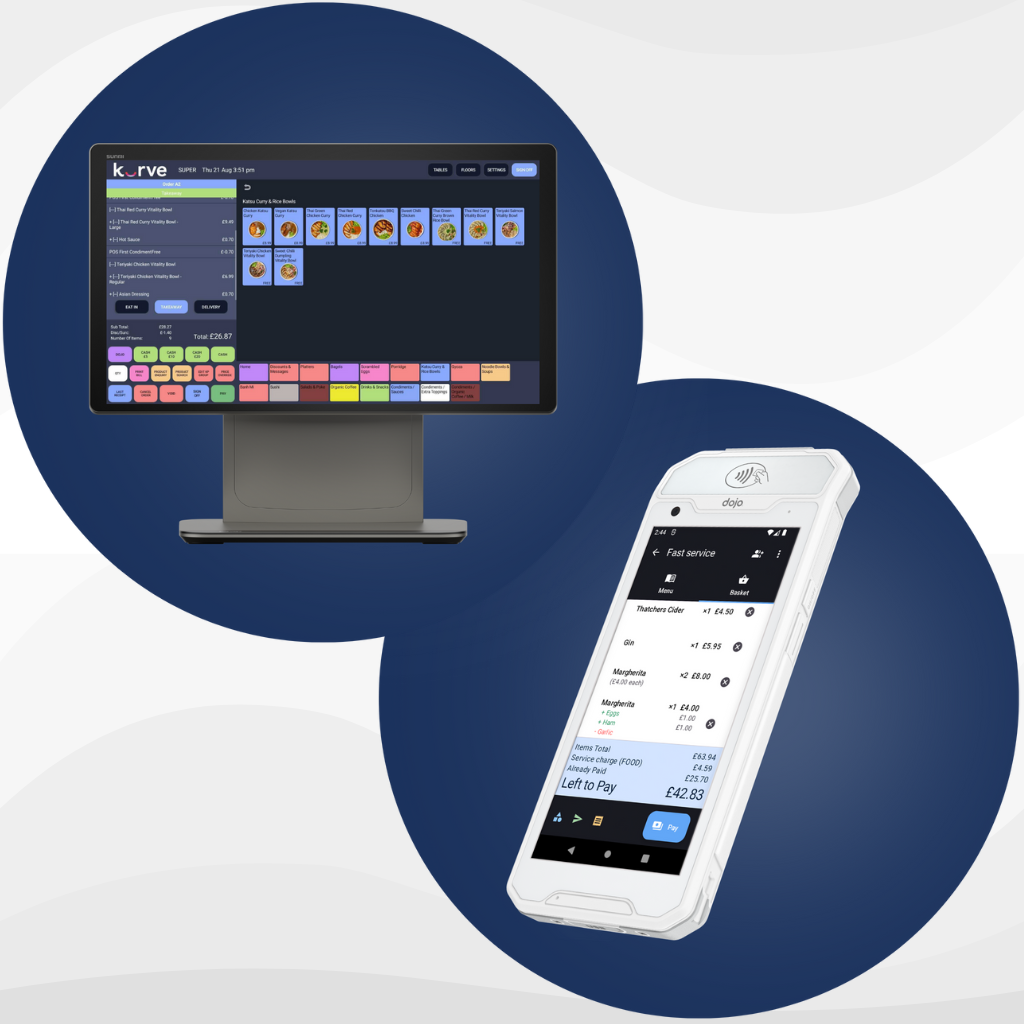Choosing between a handheld POS system and a traditional fixed POS setup isn’t just about hardware, it’s a strategic decision that can shape service flow, staff efficiency, and the overall guest experience. As customer expectations evolve and the pressure to streamline grows, restaurants, cafés, and bars are rethinking how technology supports their service models.
Whether you’re running a fast-casual venue, a high-end restaurant, or a busy coffee shop, the right POS setup can reduce friction, boost order accuracy, and ultimately increase revenue.Each option comes with its own strengths and considerations.
In this guide, we’ll explore the key differences between handheld POS and fixed POS systems to help you choose the right fit for your operation.
Handheld POS: Built for Speed and Flexibility
A handheld POS is a compact, mobile device that allows staff to take orders, process payments, and manage tables from anywhere in the venue, all while staying connected to your wider EPOS system. Whether you’re serving on the floor, outdoors, or at pop-up events, these devices offer agility and speed without compromising functionality.
Handheld POS devices are particularly effective in environments that demand speed, personalisation, and mobility. These solutions improve the flow of service and empower staff to deliver a faster, more personalised guest experience.
Benefits:
- Keep staff in their section and reduce unnecessary movement by taking orders and payments directly at the table
- Speed up table turnover for higher revenue potential
- Shorten queues and reduce congestion in service areas
- Boost staff efficiency during busy periods
- Increase order values with automated upsell suggestions
- Ensure allergy safety – staff have all allergen and menu information instantly at their fingertips
- Perfect for fast-paced table service venues
- Support real-time menu and pricing updates
Seamlessly integrate with kitchen display screens (KDS), stock management, and reporting systems
Fixed POS: Reliable and Centralised
A fixed POS system is a traditional, stationary point-of-sale terminal typically positioned at a service counter or till station. It’s a familiar format for staff and customers alike, offering stability and centralised control over transactions, reporting, and system settings. Fixed POS terminals are often connected to peripherals such as receipt printers, scanners, and cash drawers.
While not mobile, a fixed POS system provides a reliable foundation for busy hospitality environments where centralised control and high-volume transactions are key.
Benefits:
- Central control over orders and transactions
- Stable and secure infrastructure for high-volume transactions
- Seamless integration with back-office platforms
- Compatible with customer-facing displays, printers, and cash drawers
- Consistent service flow with minimal training required
- Durable hardware designed for high-use environments
- Functions as a command hub alongside handheld and kiosk-based systems
Which One Works for You?
The right approach isn’t always an either/or decision, in many cases, it’s both. More and more venues are adopting a hybrid model: handheld POS systems for tableside efficiency, paired with fixed terminals for central control and oversight. It’s the best of both worlds – fast, flexible service on the floor, with the consistency and reliability of a static hub.
At Kurve, we understand that every operation is unique. That’s why our fully integrated POS platform supports handheld and fixed formats seamlessly, giving you the scalability to grow and the agility to serve smarter.
If full-service mobility is your goal, a compact, secure handheld terminal can be a game-changer. Ideal for busy, high-turn environments, it helps keep your team moving and your customers satisfied.
At Kurve, we often ask ourselves: what does great hospitality service look like? For us, it all starts with getting the basics right consistently.
Taking orders promptly and accurately, having staff that can answer any questions about the menu with confidence, ensuring customers get exactly what they want, when they want it, providing timely check-backs, and maintaining a clean, calm atmosphere.
If you can achieve this, then you’re on to a winner. Technology should empower staff to meet these standards without compromising on the personal touch.
We’ve found that customers are more than happy to engage with new technology as long as they’re receiving an excellent experience.
Want to see it in action? Book a free demo with Kurve today and discover how smarter service starts with the right tech.
